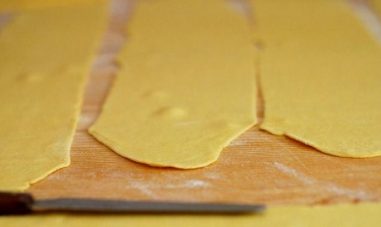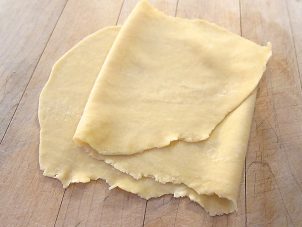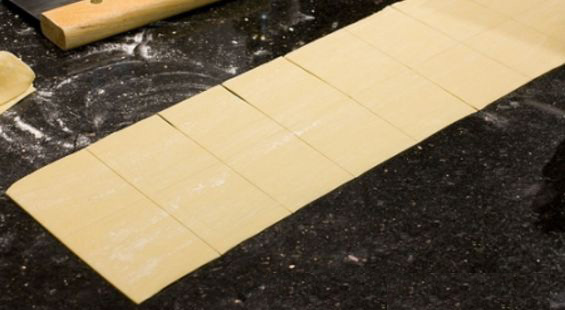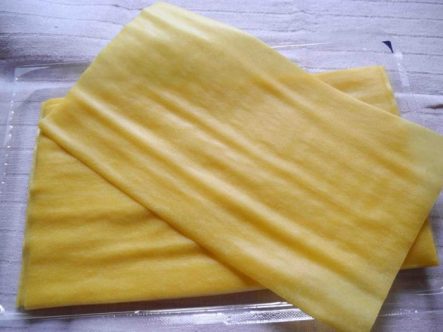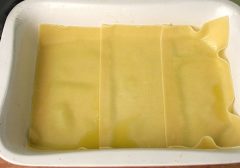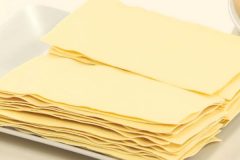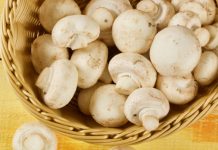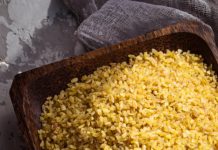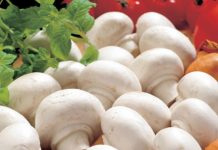Who doesn’t know what climbing is? No, these are not just layered dough sheets baked in the oven. Real Italian lasagna, cooked with love, is an incredibly tasty, dizzying smell of a dish that even the most well-fed person can not refuse.
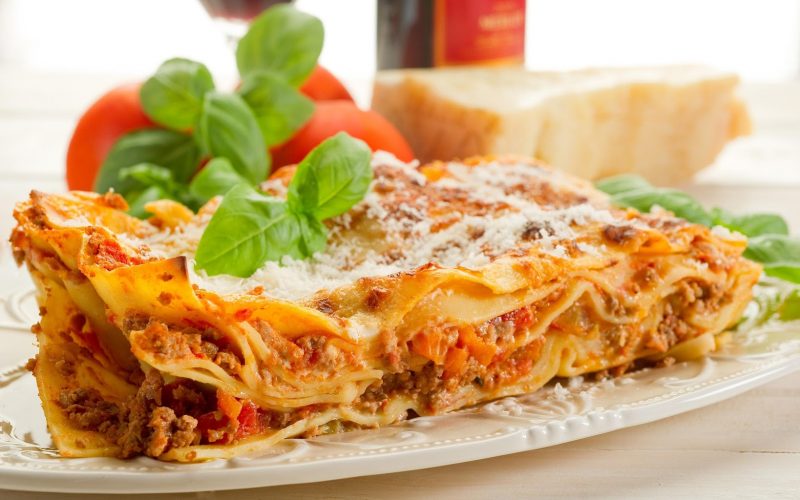
Prepare lasagna with meat and fish filling, with mushrooms and seafood. There is a lovely vegetable lasagna with eggplant and tomatoes. But whatever the filling, the basis of any culinary work is sheet dough. Not for nothing, according to one version, the name of the dish comes from the Greek word "laganon", which means a variety of flat Italian sheet pasta. Today is our story on how to make lasagna dough.
Important: Whatever recipe for dough you use, there is one requirement for flour: making durum wheat.
In the production of dough sheets, the same flour is used industrially as for pasta, it is no coincidence that the sheets go on sale as part of pasta.
Material Content:
Lasagna Sheets - A Classic Recipe
Today it’s easier than ever to go to the store and buy a pack of blanks to prepare home-made Lasagna from finished sheets. But the dough made by hand is much tastier. Just as, for example, homemade noodles are different from the best store products. Therefore, it makes sense to tinker a little with the dough and prepare real lasagna from beginning to end. Moreover, it will take nothing to do - just knead and roll out the regular dough well.
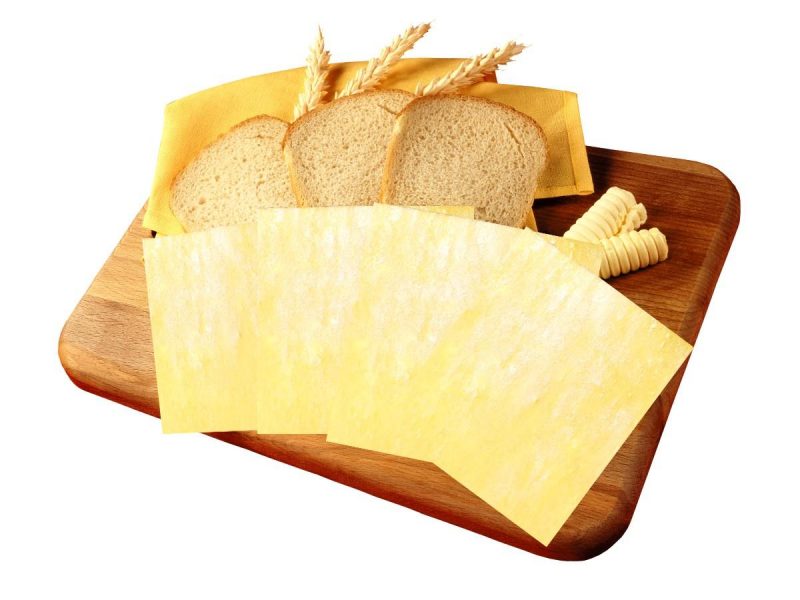
If you set a goal to make absolutely authentic climbing sheets, you need to find unrefined flour called durum.It is from it that real Italian Lasagna masters are prepared. If it is not there, then the highest grade wheat flour will go.
For the classic test you will need:
- 0.6 kg sifted flour;
- 3 large eggs;
- 100 ml of water;
- a pinch of salt.
Then everything is simple - as when mixing dough for noodles or dumplings:
- On a clean table or a special large board, we make a slide of flour with a depression in the center.
- We release eggs into this funnel.
- Stir the eggs with a fork, gradually adding flour from the edges of the funnel.
- Add water, in which the salt was previously diluted. Important: Some add salt to flour without dilution. This is permissible if the batch is manual. But if you intend to use a special machine in rolling the dough, then undissolved grains of salt can damage the surface of the shaft. So it’s better to immediately dissolve the salt in water and then add it to the flour.
- We knead all the flour, then intensively and strongly knead the dough, stretching it and folding it in half. It should become dense and uniform.
- Having rolled the dough into a ball, wrap it with a film and let it ripen for half an hour.
- After half an hour, making sure that the dough has become more elastic and pliable, we cut it into 5-6 parts and, taking out a piece of the film, we begin to roll it out - on a typewriter or manually. If we roll out on the table, do not forget to dust the rolling pin and the surface with flour.
- Cut the rolled sheets into the desired size in strips.
They can be used immediately for cooking, standing idle filling according to the recipe. Freshly prepared dough does not need preliminary welding.
Another thing is if you take previously prepared sheets. In order not to bother with the dough each time, immediately prepare a larger volume of it and, having cut it, dry it on a flat surface. To do this, you can take clean paper, a baking sheet or just a wooden board. The dough should dry to brittleness. We put the sheets in a box and use it when necessary. Here in this case, before overdosing with minced meat, boil each leaf in salted water for several minutes, adding a little olive oil to the water.
With olive oil
Some people prefer to cook the dough immediately with the addition of oil. This slightly aggravates the product by caloric value, but simplifies kneading and rolling the dough. Sheets for lasagna become more pliable and elastic, if you add 50 g of vegetable to the ingredients specified in the previous recipe. Ideal - Extra Virgin Olive oils.
Egg and flour lasagna sheets
The less water and more eggs in the dough, the denser and tastier it is. But rolling such a dough is more difficult. Therefore, if you decide to make an ideal and delicious lasagna from dough on one egg, prepare a better rolling machine or be patient.

The composition is as follows: 10 eggs are taken per 1 kg of flour. The eggs are well stirred with a pinch of salt and then gradually interfere with the flour. The dough is quite cool, slow, but it needs to be knead very well, rolling and folding again. But the efforts will be rewarded - you will get yellow dough from the eggs, which in itself will be tasty in the product.
Butter dough at home
For butter dough, you need to take, in addition to eggs, milk. Milk leaves will also be delicious and tender.
Prepare:
- three eggs;
- half a glass of milk, better fatter;
- a pinch of salt;
- flour - it is taken arbitrarily, so that it is enough to prepare a tight and cool dough, but not less than a pound.
Everything else is done according to the usual recipe: we add eggs to the flour, milk mixed with salt, everything is mixed. Next, letting the dough lie down for half an hour, roll out the sheets of the desired size.
How to make using a pasta machine?
The presence of a special rolling machine in the house greatly facilitates the matter, making the preparation of dough for lasagna and noodles a real pleasure and a whole family ritual. In the machine, the dough rolls faster, it is more dense and smooth. The recipe for the machine is different in that, as a rule, no liquid is present in it.
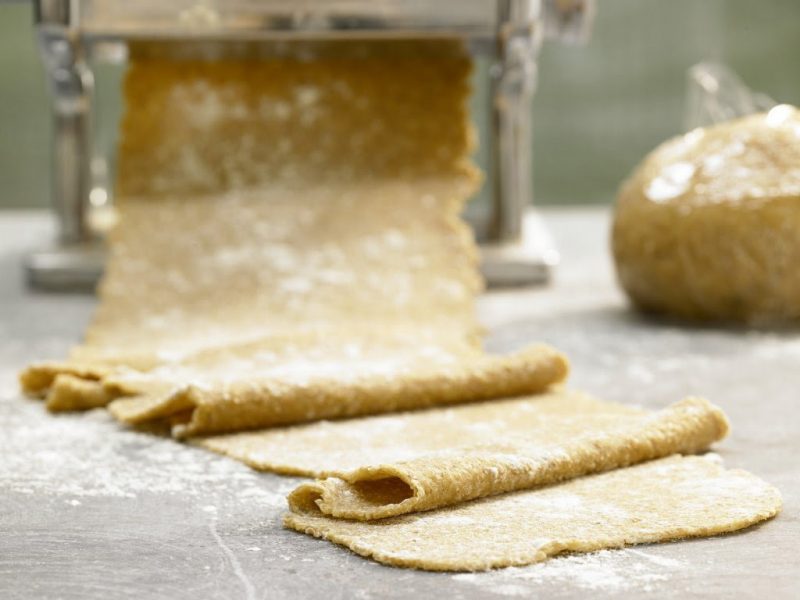
Here is one of the options:
- take a couple of eggs;
- add a spoonful of any vegetable oil to them and mix well (the dough rolls thinner from the oil);
- add two glasses of flour;
- mix everything by forming a ball. Put the dough under the film;
- half an hour later, cut a piece of dough, flatten the edge a little and insert between the shafts of the machine, setting the largest distance between the shafts;
- gradually reducing the distance between the shafts, roll out the dough to the thinnest.
Note! Salt is not put in this recipe so as not to damage the shafts. But buckwheat flour, vegetables passed through a meat grinder (spinach, carrots, beets, pumpkin) can be added during kneading. They will saturate the product with vitamins and give an interesting taste and color.
Bran dough
For proponents of a healthy diet, you can offer dough with bran. The proportions of flour and chopped bran are one in three. Therefore, taking 320 g of flour, add 110 g of bran grinded in a coffee grinder to it, sift everything together through a sieve to exclude large fragments.
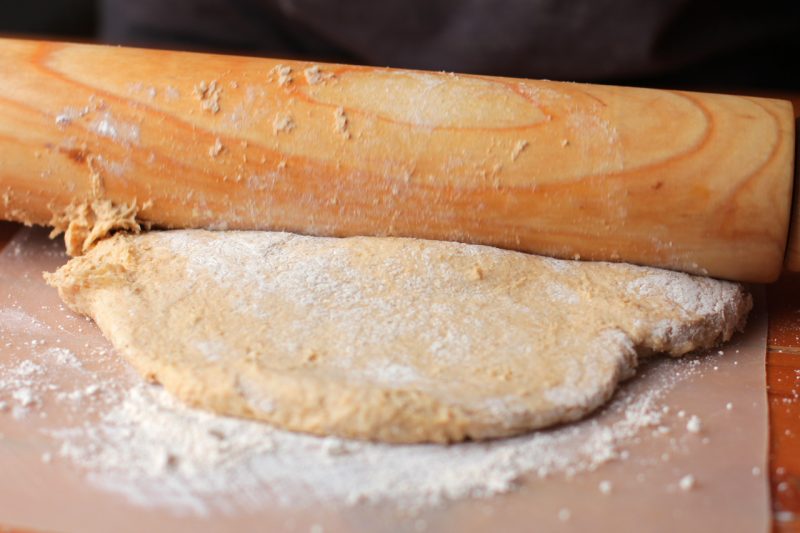
Next, salt (to taste) and four eggs are added to the flour. You can add a little vegetable oil to facilitate kneading. Everything else is done as in previous recipes.
Recipe from finished sheets

If you use ready-made sheets, then before putting them into shape, they must first be boiled in a large amount of a little salted water, then carefully removed and put in a bowl of cold water. Next, use prescription Lasagna.


